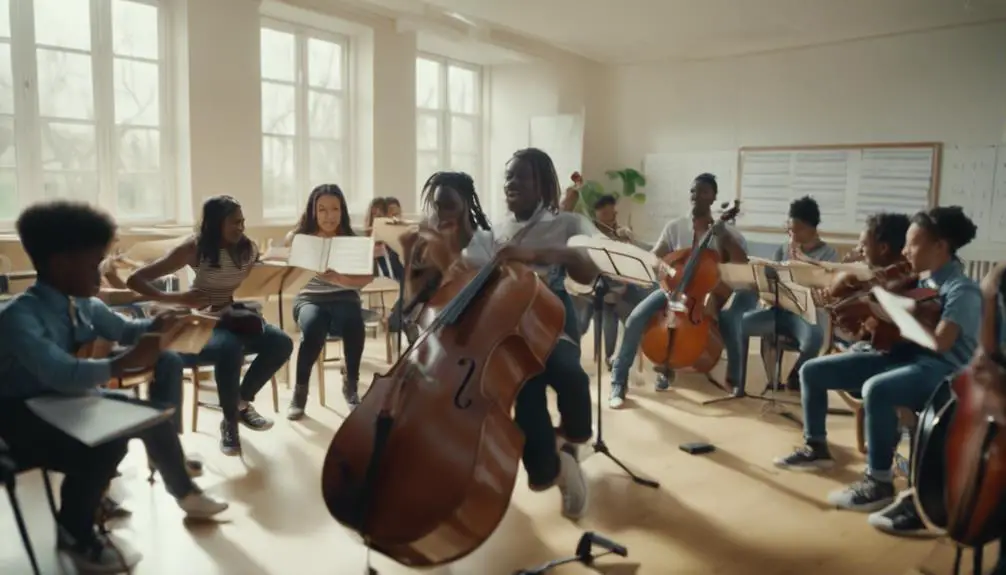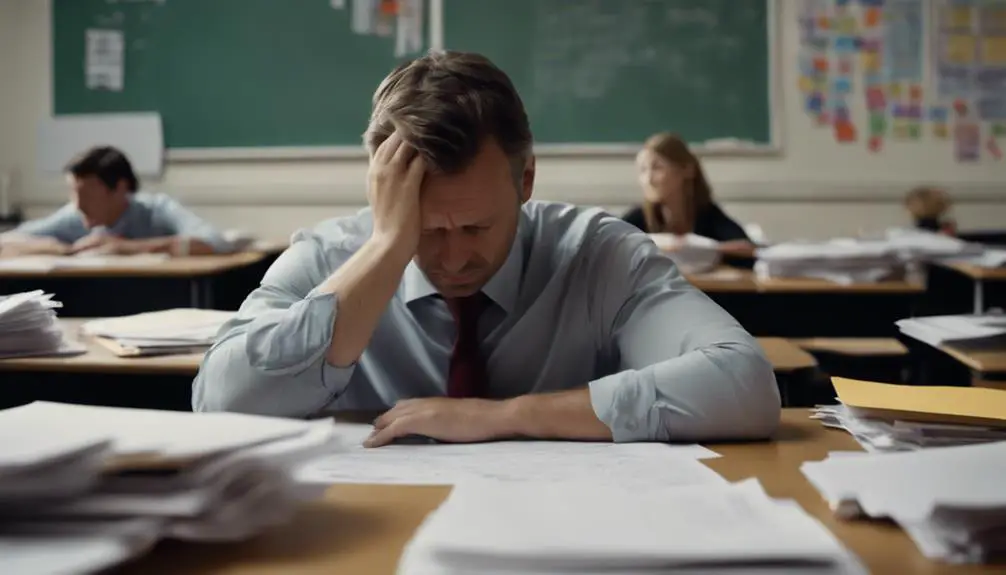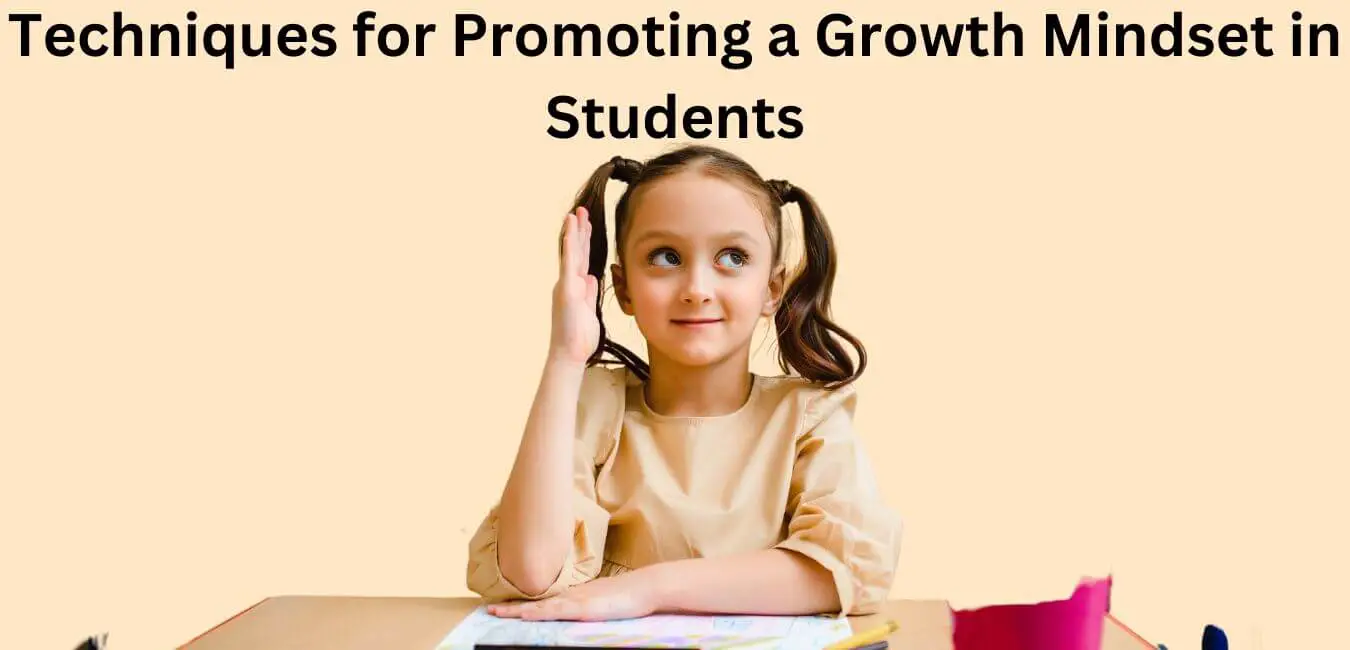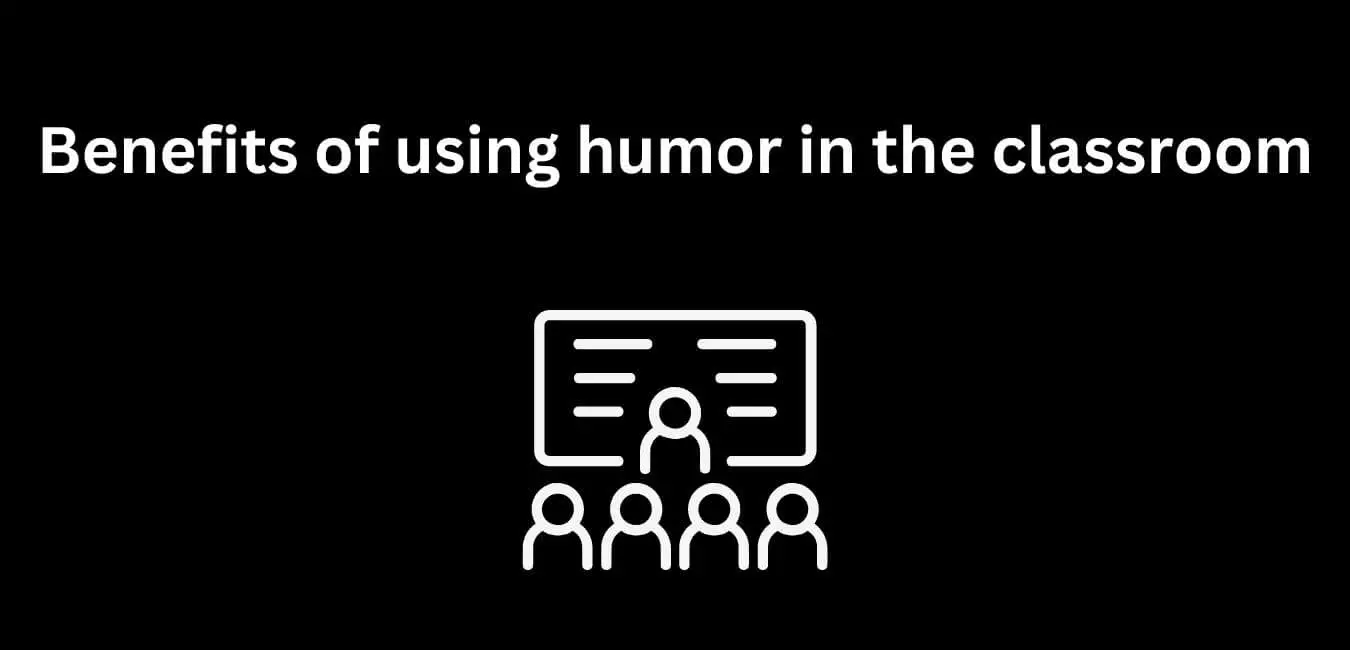Teaching with music can be highly effective in the classroom. It aids in better information retention, supports brain development, increases engagement, reduces stress levels, promotes collaboration, fosters discipline, and enhances emotional well-being.
Music serves as a versatile and impactful tool across various subjects.
To gain a deeper understanding of how music can enhance learning, let’s further explore the benefits it offers in education.
Reasons Why You Should Consider Integrating Music into Your Lessons
Enhances Memory
Music acts as a powerful tool to enhance memory, helping students remember information more effectively through engaging tunes and rhythms. Incorporating musical techniques in the classroom can significantly boost memory retention among students. These techniques involve setting information to music, creating catchy tunes for key concepts, and using rhythm to structure and organize content.
The educational impact of integrating music into teaching is remarkable, as students are more likely to recall facts and concepts presented in a musical format. Strategies like incorporating songs, chants, or musical mnemonics can make learning engaging and memorable for students. By leveraging music as a mnemonic device, educators can create a dynamic and interactive learning environment that fosters better retention of information among students.
Stimulates Brain Development
When students engage with music in educational settings, they’re actively stimulating brain development. Exposure to music has been associated with improvements in crucial areas such as sound processing, language development, speech perception, and reading skills. This engagement triggers a cascade of cognitive benefits that enhance neural pathways, ultimately leading to positive impacts on academic performance.
Music plays a key role in promoting brain plasticity, making it easier for students to adapt to new information and learning experiences. It also helps sharpen cognitive skills related to language processing, which are fundamental for effective communication and comprehension. Moreover, music contributes to improved reading comprehension by simultaneously activating various regions of the brain.
This holistic approach to learning through music fosters cognitive development by forming intricate neurological connections that support overall brain function and cognitive abilities.
Boosts Engagement
Incorporating music into the classroom setting enhances student engagement levels by introducing a dynamic change of pace that effectively captures and maintains their attention. Active participation and creative expression are ignited when students interact with music, transforming the learning experience into a more interactive and enjoyable one.
Serving as a classroom energizer, music prompts enthusiastic responses from students, fostering a vibrant and lively atmosphere that enriches the educational journey. Understanding students’ musical preferences can significantly boost their motivation to participate and learn, establishing a deeper connection to the educational content.
Melodic learning plays a vital role in promoting academic engagement by integrating music into lessons, rendering complex concepts more accessible and memorable. The rhythmic teaching approach encourages student focus by establishing a structured and rhythmic environment that encourages active listening and engagement.
Through the integration of music into the classroom, educators can cultivate a more engaging and stimulating learning environment tailored to students’ diverse learning styles and preferences.
Reduces Stress
Feeling the calming influence of music in the classroom sets a serene and conducive atmosphere for learning and creativity. Music serves as a potent tool in stress management and therapy, enhancing student well-being. Here are three ways music alleviates stress and enhances the classroom environment:
- Relaxation Techniques: Introducing music into lessons offers students relaxation strategies to ease stress. The harmonious melodies create a tranquil setting, enabling students to relax and concentrate better on their tasks.
- Creating a Calm Environment: Music plays a crucial role in establishing a peaceful ambiance in the classroom, lowering anxiety levels and promoting mental wellness. This serene setting helps students feel more comfortable, fostering a positive mindset for learning.
- Encouraging Creative Expression: Music sparks creative expression, a vital element for academic achievement. By encouraging students to interact with music, educators can stimulate their creativity, leading to innovative thinking and enhanced problem-solving abilities.
Encourages Collaboration
Music activities in the classroom necessitate students to collaborate, fostering teamwork and cultivating crucial social skills.
Through these joint efforts, students enhance their communication skills by effectively expressing their ideas and actively listening to their peers.
Engaging in music activities also stimulates creative problem-solving as students work together to conquer challenges and craft harmonious melodies. These interactions bolster peer relationships, creating a supportive environment where students learn to respect and value each other’s contributions.
Moreover, music activities prompt critical thinking as students analyze musical pieces, make decisions regarding tempo, dynamics, and interpretation, and justify their choices to their peers.
This process promotes leadership development as students assume different roles within the group, mastering the art of guiding and supporting others effectively.
By participating in music-related collaborations, students not only advance musically but also cultivate essential social skills that will benefit them in various aspects of their lives.
Builds Cultural Awareness
Exploring diverse musical customs helps students broaden their cultural understanding, fostering empathy and a global perspective.
Embarking on a musical journey allows students to dive into the varied traditions and musical expressions found worldwide.
This experience encourages empathy as students emotionally connect with the stories and experiences portrayed in different genres of music.
It also aids in developing a global viewpoint by prompting students to value diversity and recognize the common humanity that transcends borders.
Aids Language Development
Enhancing language acquisition through repetitive patterns and exposure to new vocabulary, singing and music play a crucial role in supporting language development.
Music offers an interactive platform for practicing phonics, helping students distinguish sounds in words. Through songs, learners effortlessly pick up new vocabulary, making learning more enjoyable and effective.
Additionally, music reinforces grammar rules by presenting language structures in a memorable way, enhancing students’ comprehension and retention. Pronunciation also benefits from singing, as it encourages clear articulation to match the melody.
Music fosters communication skills by prompting active listening and appropriate responses to verbal cues in songs. Incorporating music into language learning creates a dynamic and immersive environment that aids comprehensive language development.
Improves Motor Skills
Engaging in movement activities connected with music can significantly enhance both fine and gross motor skills. It’s intriguing how music can improve our physical abilities in various ways. Here are three key points to consider:
- Motor coordination and rhythm practice: Music naturally involves rhythm, and when we engage in movements like dancing or playing instruments, our bodies learn to coordinate with the beat. This enhances our overall motor skills.
- Music therapy and movement therapy: These therapeutic approaches utilize music and movement to address physical challenges. They can be especially beneficial for individuals seeking to improve their motor skills in an enjoyable and engaging manner.
- Instrumental skills and physical development: Learning to play an instrument demands not just mental sharpness but also physical dexterity. Practicing musical techniques helps refine fine motor skills and contributes to overall physical development.
Increases Motivation
When students engage in enjoyable music activities, it ignites a sense of motivation that spurs them to actively participate in their learning journey. Incorporating music into lessons enhances student engagement, fostering a vibrant classroom atmosphere where learners are eager to join in.
The motivation instilled by music can improve memory retention as students become more attentive and invested in the material being presented. Active involvement in music not only enhances academic performance but also cultivates collaboration and teamwork among students, enhancing classroom dynamics.
When students are motivated by enjoyable music activities, they’re more inclined to explore new concepts, ask questions, and participate in discussions, leading to a deeper comprehension of the subject matter. By harnessing the inspirational power of music, educators can create a learning environment that’s enriching and rewarding for everyone involved.
Breaks Monotony
Introducing music into the classroom brings a refreshing change, adding vitality and excitement to the learning environment. It breaks the usual routine of lectures and worksheets, making the atmosphere more engaging and dynamic. Here are three ways in which music can breathe new life into a classroom:
- Interactive Engagement: By incorporating music into group activities, students can collaborate to create rhythms or songs. This promotes teamwork, communication skills, and a sense of unity among peers.
- Encouraging Creativity: Students can be encouraged to write their lyrics or express songs through art, providing a platform for individual creativity within a structured setting. This fosters self-expression and artistic exploration.
- Boosting Energy Levels: Playing upbeat music during transitions or as a brief break can re-energize students, helping them to refocus and maintain attention throughout the day. It serves as a refreshing pause that revitalizes both body and mind.
Supports Emotional Learning
Supporting emotional learning, incorporating music in the classroom offers students a unique opportunity to explore and express a wide range of emotions. Integrating music therapy techniques into lessons helps students enhance their emotional intelligence and self-awareness.
Through music, students can find a creative way to articulate their feelings, whether it’s joy, sadness, excitement, or calmness. This process not only encourages self-expression but also enhances their ability to understand and manage their emotions effectively.
Facilitates Relaxation Techniques
Exploring the calming effects of music in the classroom can be a valuable tool for managing behavior and creating a conducive environment for focused work periods. When considering the impact of slow and calming music, it’s important to acknowledge its role in promoting relaxation techniques within the classroom setting.
Here are three ways in which music can aid in this process:
- Mindful listening: Encouraging students to engage in mindful listening practices with serene music can help them center their thoughts and emotions, fostering a sense of peace and tranquility within the classroom ambiance.
- Behavior management: Utilizing music as a tool for signaling transition times or quiet work periods can assist in managing student behavior effectively. The soothing melodies act as cues, guiding students towards more focused and composed actions.
- Calm focus: Slow music sets a calming tone that promotes concentration and a sense of calm focus, enhancing students’ ability to engage with tasks attentively and productively.
Strengthens Group Identity
Strengthening group identity through singing a class song or establishing a music-related class tradition fosters unity and belonging among students. Engaging in team-building activities like singing together creates a shared experience that enhances connections between classmates. This unity through music encourages collaboration and empathy, fostering a supportive environment where students feel valued and accepted. Participating in classroom traditions centered around music reinforces belonging and identity, instilling pride in being part of the group.
Sing-along sessions, where everyone joins in song, promote a sense of togetherness and inclusivity, breaking down barriers among students. These activities transcend individual differences, bringing students closer and creating a cohesive community within the classroom. Through music-related class traditions, students develop a shared history and culture, strengthening their bond and creating a safe space for freely expressing themselves.
Encourages Creativity
Music has a way of sparking creativity and inspiring students to explore new ideas, especially when they’re composing or improvising music. Here are three ways in which music can nurture creativity and create a vibrant learning environment:
- Expressing Creativity: Music offers a unique outlet for students to express their emotions and thoughts through melodies and lyrics. This form of artistic expression allows students to delve into their innermost feelings and ideas, fostering a sense of self-discovery and creativity.
- Encouraging Innovative Thinking: When students engage with music, they’re challenged to think innovatively and hone their improvisational skills. By experimenting with different sounds and rhythms, students can push the boundaries of conventional music and craft original compositions that reflect their own individuality.
- Inspiring Artistic Exploration: Music serves as a wellspring of inspiration for students to explore new ideas and techniques. Whether they’re exploring different composition styles or experimenting with various musical instruments, music can ignite their imaginations and lead to inventive musical creations, nurturing their problem-solving skills along the way.
Helps Pattern Recognition
Understanding the mathematical structure of music can enhance one’s ability to identify patterns in different subjects. Cognitive development benefits from exposure to music, as the brain processes rhythmic patterns, improving analytical skills.
Deciphering the complex musical structure sharpens critical thinking and problem-solving skills acquired through music education. Academic performance can also see improvements through recognizing melodies, helping students interpret various musical motifs and themes.
The organized nature of music serves as a basis for identifying and interpreting patterns, which can be applied in diverse fields. Through engaging with music, individuals develop a heightened awareness of patterns, leading to enhanced pattern recognition in academic and real-world settings.
Fosters Discipline
Mastering a musical instrument demands consistent practice and unwavering dedication, cultivating discipline that can positively impact academic pursuits. As a music educator, I’ve observed the transformative effects of musical learning on students’ academic journeys.
Here are three ways in which music can enhance discipline and academic success:
- Effective Time Management: Balancing music practice alongside other commitments teaches students valuable time management skills. This ability to prioritize tasks can help them study efficiently and complete assignments promptly.
- Enhanced Academic Performance: The self-discipline developed through musical practice often leads to improved academic achievements. Students learn to set goals, work diligently towards them, and experience the rewards of their hard work.
- Improved Concentration: Playing music requires intense focus and concentration, which can benefit students in their academic endeavors. These concentration skills aid in staying engaged during lessons, absorbing information effectively, and enhancing the overall learning experience.
Provides Sensory Learning
When observing students immersed in musical practice, one can see how different senses are engaged, creating a comprehensive learning experience beyond just hearing.
Music provides a hands-on experience through playing instruments, allowing students to physically interact with the production of sound.
This tactile involvement deepens their connection to the music they create and enhances their overall understanding.
Visual elements play a significant role in music education as well, with students deciphering symbols in sheet music to produce sounds.
This process not only improves their visual acuity but also reinforces memory and cognitive skills. Kinesthetic learning is promoted through activities such as dancing or conducting, where movements synchronize with the music, improving physical coordination and rhythmic awareness.
Furthermore, music fosters creative expression, enabling students to communicate emotions and ideas through composition or performance.
By incorporating these sensory aspects, music education promotes sensory integration, leading to enhanced learning outcomes that are engaging and enriching.
| Sensory Learning in Music | Benefits |
|---|---|
| Hands-on engagement | Enhances understanding and connection to music |
| Visual stimulation | Sharpens visual skills and memory retention |
| Kinesthetic learning | Improves physical coordination and rhythm |
| Creative expression | Enables emotional and creative expression |
Offers Emotional Support
Music acts as a comforting sanctuary for some students, offering much-needed emotional support during periods of anxiety and other challenges. When students turn to music for emotional solace, they experience various advantages:
- Music Therapy: Engaging in music therapy provides students with a safe outlet to express their emotions and navigate difficult feelings effectively.
- Emotional Expression: Music enables students to convey their innermost thoughts and emotions in ways that words alone may not capture, facilitating emotional release and comprehension.
- Stress Relief: Whether through listening to soothing melodies or playing musical instruments, students can unwind, alleviate stress, and cultivate a sense of well-being.
Incorporating music for emotional support can play a crucial role in managing anxiety and enhancing overall mental well-being. Educators can create a supportive learning environment by integrating music, fostering students’ emotional health, and enriching their educational journey.
Makes Learning Fun
Learning in the classroom becomes a delightful experience when music is incorporated, enhancing student engagement and information retention.
When students enjoy the learning process, they actively participate, leading to better understanding of the material. Music allows students to express their creativity, making the learning journey more dynamic and personalized.
Interactive lessons that integrate music not only make learning enjoyable but also improve students’ ability to remember information in the long run.
Moreover, a pleasurable educational environment with music in the classroom offers numerous benefits, fostering a positive and stimulating atmosphere. Enjoyable learning experiences with music create a space where students are eager to participate, learn, and develop both academically and personally.
Conclusion
Teaching through music is akin to crafting a dynamic artwork in the classroom, where each musical note adds a burst of vividness to the learning journey.
Music not only aids in memory retention but also in stress reduction and the promotion of teamwork, creating a seamless fusion of melody and education.
So, let’s crank up the tunes, move to the rhythm, and allow the melodic flow of music to steer us towards a lively, interactive, and efficient teaching approach in the classroom.














